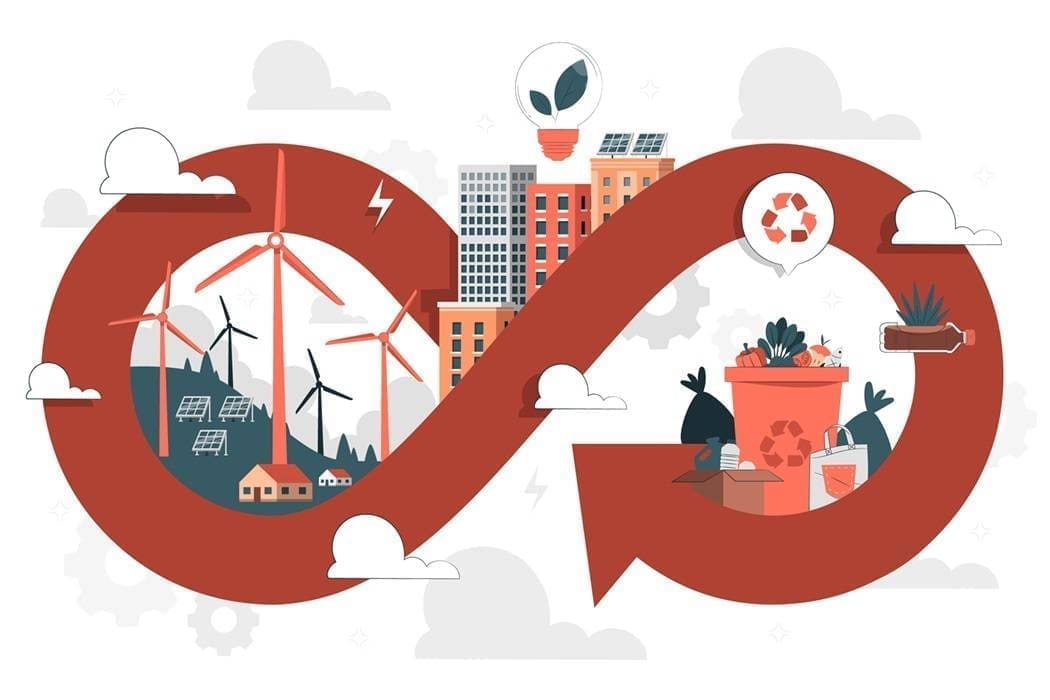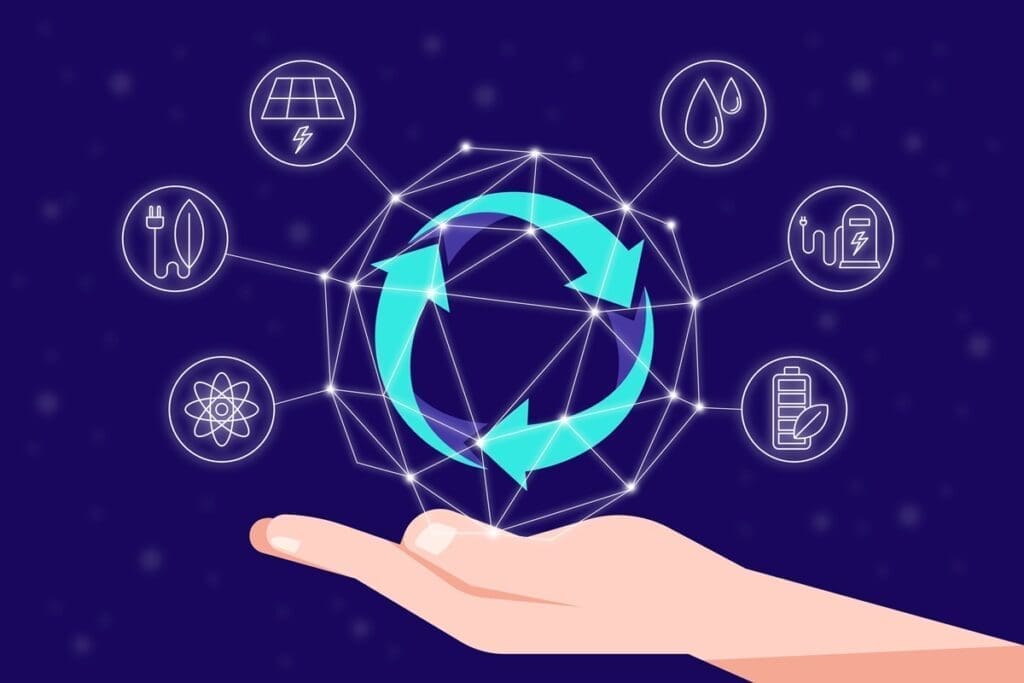Sustainable energy and circular economy (CE)
 Circular economy
Circular economy
What do sustainable energy and circular economy (CE) have in common? What are the different concepts? What is the role of the circular economy in the energy sector? Learn more about the ideas for economic development, taking into account the efficiency of the solutions used and reducing their negative impact on the environment.
The concept of sustainable energy
By definition, sustainable energy is based on the pursuit of the development of energy efficiency and renewable energy, and on such a way of producing, distributing and managing the use of energy as to minimise the negative impact of the whole process on the environment. The idea is to reduce emissions of carbon dioxide and other pollutants.
Achieving these objectives requires a multifaceted approach, taking into account issues such as the decarbonisation of energy, investment in renewable energy sources and energy efficiency. The third element, in particular, is very important, as it makes it possible to limit the growth of energy demand, thus allowing extra time for the modernisation and development of energy infrastructure as well as the above-mentioned investments in RES. Too rapid an increase in energy consumption would make it significantly more difficult to reduce the use of fossil fuels, as the development of renewable energy would not be able to keep up with the growing demand.
Sustainable energy as a concept assumes that the way in which energy is used is important in order to avoid wasting it. This, moreover, is what energy efficiency is all about, i.e. making sure that as much as possible of the energy produced by a given process is used efficiently.
What is circular economy?
The second concept in question is circular economy (CE), which is also linked to the concept of sustainability. According to the definition presented by the European Parliament, the circular economy is a production and consumption model that involves “sharing, leasing, reusing, repairing, refurbishing and recycling existing materials and products as long as possible” The aim of this process is to extend the life cycle of products and reduce the waste generated to a minimum. Therefore, even if a product’s life cycle is coming to an end, it should be recycled, which creates further value by bringing the data, in this case raw materials, back into circulation in the economy.
The circular economy is based on the 3xR principle. It is derived from the words: Reduce, Reuse, Recycle, which mean:
- reducing the amount of products, raw materials, etc. used in order to generate as little waste as possible (Reduce)
- using existing products/raw materials as efficiently as possible (Reuse)
- using available raw materials again and putting them back into circulation (Recycle)

CE in the energy sector
The principles of the circular economy can be applied to the energy sector precisely in the context of the pursuit of sustainable energy. Indeed, such assumptions are included in the “Energy Policy of Poland until 2040”, a document developed by the Ministry of Climate. The guidelines of the Policy include:
- optimal use of own energy resources
- expansion of electricity generation and grid infrastructure
- development of renewable energy sources
- improvement of energy efficiency of the economy
What might this process of making better use of available resources and closing the loop look like in practice? On the one hand, we can speak of striving for the optimal use of available raw materials. Even if we close the loop and use some raw materials repeatedly, industrial or agricultural production will generate a certain amount of waste, which can be a source of energy. This also applies to some municipal waste. However, it is important to make maximum use of the energy produced in this way – and not just the energy itself, but also, for example, the heat generated in the process.
The use of RES in CE
Another cornerstone of the CE concept in the energy sector is the development of RES, i.e. investments in wind farms or photovoltaic installations. These are clean energy sources that enable the decarbonisation of the sector and the move away from fossil fuels, which are a source of significant pollution and environmental degradation. Interestingly, the CE concept can be taken into account on many levels even at the RES investment stage. For example, the construction of a wind turbine can be planned in such a way as to use recyclable materials.
Poland faces a number of challenges associated with using renewable energy sources to a much greater extent than is currently the case. One of these is ensuring that energy is available at the right parameters. For this purpose, transformers dedicated to the RES industry are used to transmit electricity with different parameters between circuits, while maintaining the same frequency and preventing voltage spikes in the circuits. The role of transformers is also to maintain or adjust the parameters of the current according to the requirements of the equipment used in the industry.